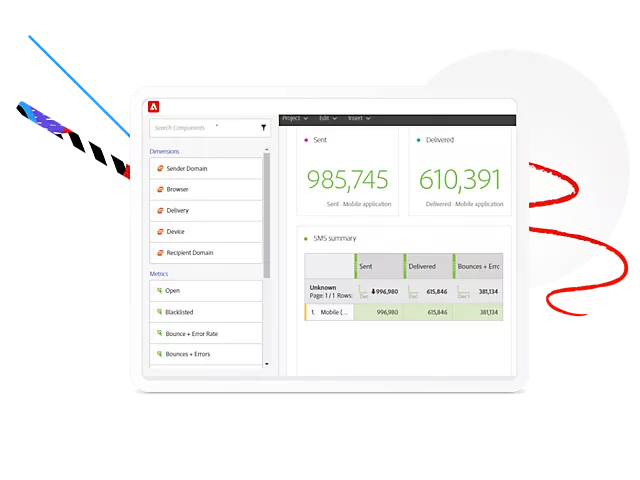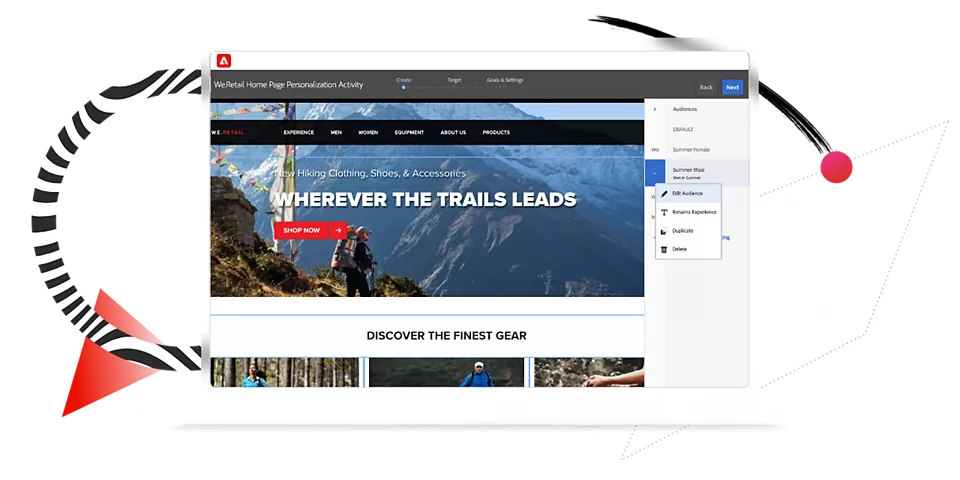Introduction
Adobe Experience Manager (AEM) is a leading content management system (CMS) that empowers businesses to create and deliver exceptional digital experiences. With a wide range of robust features and capabilities, AEM enables organizations to streamline content management, enhance personalization, facilitate multichannel delivery, gain valuable insights through analytics, and ensure the security of their digital assets. In this comprehensive guide, we will explore in detail the key features and functionalities of AEM that contribute to creating exceptional digital experiences.
Extensibility: Adapting to Business Needs
AEM’s extensibility plays a crucial role in its ability to adapt to the unique requirements of businesses. It offers the following features:
- Integration: AEM provides extensive integration capabilities, allowing seamless connectivity with external systems and services through APIs. This enables businesses to leverage existing tools and technologies, such as customer relationship management (CRM) platforms, marketing automation systems, and e-commerce platforms, to enhance their digital experiences.
- Scalability: AEM is designed to handle large volumes of content and accommodate growing business needs. Its distributed architecture and load balancing ensure high performance even when dealing with massive amounts of content, ensuring a seamless experience for users.
Content Management: Streamlining Creation and Publishing
AEM’s content management features enable businesses to efficiently create, organize, and publish content across various channels. The key components of AEM’s content management capabilities include:
- Content Creation: AEM offers a user-friendly interface and a powerful WYSIWYG editor, empowering content creators to design and structure engaging content without the need for technical expertise.
- Versioning: AEM’s version control capabilities enable teams to track content revisions, collaborate effectively, and easily revert to previous versions if needed, ensuring content accuracy and accountability.
- Metadata Management: AEM allows businesses to define and manage metadata associated with content. Metadata plays a crucial role in content organization, searchability, and contextualization, improving content discoverability and facilitating targeted personalization.
- Content Tagging: AEM’s content tagging feature enables content creators to assign descriptive tags to content, making it more easily discoverable and enhancing content organization.
- Content Publishing: AEM streamlines the content publishing process, allowing businesses to deliver content seamlessly across multiple channels and devices. It provides flexible options for real-time publishing or scheduling content for future deployment, ensuring timely delivery.

Digital Asset Management: Organizing and Optimizing Assets
AEM’s digital asset management capabilities provide businesses with efficient tools for storing, organizing, and optimizing their digital assets. Key features of AEM’s digital asset management include:
- Asset Storage: AEM provides a secure and centralized repository for storing digital assets, ensuring easy access and retrieval for content creators. It supports various file types, allowing businesses to manage diverse assets such as images, videos, documents, and more.
- Metadata Management: AEM enables businesses to define and manage metadata for digital assets. Metadata enhances asset searchability, provides contextual information, and facilitates efficient asset management and reuse.
- Asset Versioning: AEM’s asset versioning feature allows teams to manage different versions of assets. It tracks changes made to assets over time, enabling content creators to access and revert to previous versions when necessary.
- Asset Searching: AEM offers advanced search capabilities, enabling users to quickly locate assets based on metadata, keywords, or other search criteria. This improves productivity and streamlines asset selection for content creation.
- Asset Transformation: AEM can dynamically transform assets on the fly, ensuring they are optimized for various channels and formats. This automatic adaptation saves time and effort by eliminating the need for manual asset resizing and conversion.
Workflow Management: Streamlining Collaboration and Approval Processes
AEM’s workflow management capabilities automate and streamline content approval and publishing processes, facilitating efficient collaboration among team members. Key components of AEM’s workflow management include:
- Workflow Design: AEM provides a visual workflow editor that allows businesses to design custom workflows with defined steps, roles, and rules. This enables efficient collaboration and ensures that content moves through the necessary review and approval processes smoothly.
- Task Assignment: AEM’s task assignment feature assigns specific tasks to users involved in the content creation and approval process, streamlining workflow management and improving accountability.
- Notifications: AEM sends notifications and alerts to users at various workflow stages, keeping them informed about the progress and status of their tasks. This helps teams stay updated and ensures timely actions.
- Workflow Monitoring: AEM’s workflow monitoring capabilities provide real-time visibility into the progress of workflows. Content managers can track and analyze workflow data, identify bottlenecks, and make informed decisions to optimize processes.
Personalization: Delivering Tailored Experiences
AEM’s personalization features enable businesses to deliver tailored experiences to their audiences, enhancing engagement and conversion rates. The key components of AEM’s personalization capabilities include:
- User Segmentation: AEM allows businesses to segment users based on various criteria such as demographics, behavior, or preferences. This segmentation enables targeted content delivery and personalized experiences that resonate with individual users.
- Rule-Based Personalization: AEM’s rule engine empowers businesses to define personalized experiences based on predefined conditions. This enables dynamic content delivery, adapting to each user’s context and preferences in real time.
- Targeted Content Delivery: AEM enables businesses to deliver targeted content to specific user segments, ensuring that the right content reaches the right audience. This improves relevance and engagement, leading to better customer experiences.
- A/B Testing: AEM’s A/B testing feature allows businesses to experiment with different variations of content, layouts, or designs to optimize personalization strategies. By testing and analyzing user responses, businesses can refine their approaches and deliver more impactful experiences.
Multichannel Delivery: Consistent Experiences Across Channels
AEM’s multichannel delivery capabilities ensure consistent content experiences across different channels and devices. Key components of AEM’s multichannel delivery include:
- Responsive Design: AEM enables businesses to create responsive designs that adapt seamlessly to various screen sizes and devices. This ensures a consistent and optimized user experience, regardless of the device used.
- Channel-Specific Optimization: AEM allows businesses to optimize content for specific channels such as web, mobile, social media, or email. By tailoring content to each channel’s requirements and user behaviors, businesses can deliver content in the most effective and engaging format.
- Content Synchronization: AEM ensures content consistency across different channels, synchronizing content updates and changes in real-time. This eliminates discrepancies and ensures that users receive the latest and most relevant content, regardless of the channel they engage with.
Analytics and Reporting: Insights for Data-Driven Decisions
AEM’s analytics and reporting capabilities provide valuable insights into content performance and user behavior, enabling data-driven decision-making. Key components of AEM’s analytics and reporting include:
- Data Collection: AEM collects and analyzes data related to user interactions, content views, conversions, and other relevant metrics. This data-driven approach helps businesses understand user preferences, identify trends, and optimize content strategies.
- Data Visualization: AEM’s data visualization tools present data in meaningful visual formats such as charts, graphs, and dashboards. This enables businesses to gain a comprehensive understanding of content performance and user behavior at a glance, facilitating quick and informed decision-making.
- Performance Metrics: AEM allows businesses to define and track key performance indicators (KPIs) for content and campaigns. These metrics provide quantifiable data to evaluate the success of digital experiences, identify areas for improvement, and measure the impact of personalization and optimization efforts.
- Reporting Automation: AEM automates the generation and delivery of reports, saving time and effort for content managers and stakeholders. Scheduled reports provide regular updates on content performance, ensuring that stakeholders are informed and can make data-driven decisions.

Integration: Seamlessly Connect with External Systems
AEM’s integration capabilities enable seamless connectivity with other systems and technologies, expanding its functionality and leveraging existing infrastructure. Key components of AEM’s integration include:
- API Integration: AEM provides APIs that allow businesses to integrate with external systems such as CRM platforms, marketing automation tools, or e-commerce systems. This facilitates data exchange, streamlines processes, and enables businesses to leverage their existing systems.
- Third-Party Integrations: AEM supports integration with a wide range of third-party tools and services. Whether it’s analytics platforms, social media management tools, or marketing automation systems, AEM’s extensibility ensures compatibility and enables businesses to leverage best-of-breed solutions.
- Data Exchange: AEM facilitates data exchange and synchronization with other systems, ensuring consistent and up-to-date data across platforms. This integration capability eliminates silos and enhances collaboration, leading to more efficient and effective digital experiences.
Security: Protecting Content and User Data
AEM’s security features ensure the protection of content, assets, and user data, maintaining the integrity and trustworthiness of digital experiences. Key components of AEM’s security include:
- Access Control: AEM allows businesses to define granular access controls, ensuring that only authorized users can access and modify content and features. This protects sensitive information and ensures compliance with privacy regulations.
- User Authentication: AEM supports various authentication methods, such as single sign-on (SSO) or multi-factor authentication, protecting against unauthorized access and ensuring that only authorized individuals can interact with the system.
- Data Encryption: AEM employs encryption techniques to safeguard sensitive data, both in transit and at rest. This protects content, assets, and user information from unauthorized access or interception.
- Audit Trail: AEM logs and tracks user activities, providing an audit trail for security and compliance purposes. This feature enables businesses to monitor user actions, detect anomalies, and investigate any security incidents.
Conclusion
Adobe Experience Manager (AEM) offers a comprehensive set of features and capabilities that empower businesses to create exceptional digital experiences. From content management and personalization to multichannel delivery, analytics, integration, and security, AEM provides the tools and functionalities needed to succeed in the digital landscape. By leveraging AEM’s extensive features, businesses can streamline content workflows, deliver personalized experiences, gain valuable insights, and ensure the security of their digital assets. With AEM, organizations can create memorable and impactful digital experiences that engage and delight their audiences, ultimately driving business success in the modern digital age.

I’m Kirill Efimov, an experienced AEM developer with over 10 years of experience in Java and web development. I’m skilled in developing AEM components, templates, workflows, and integrations with other systems, and I’m passionate about delivering high-quality solutions to my clients.
I also believe in knowledge-sharing and staying up-to-date with the latest developments in the industry. Through blog posts, tutorials, and speaking engagements, I’m committed to contributing to the AEM community and helping others overcome the challenges they may face in their AEM projects.
